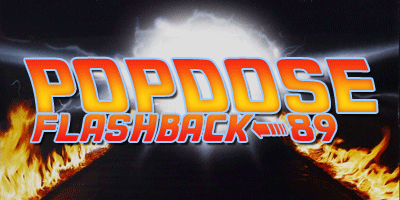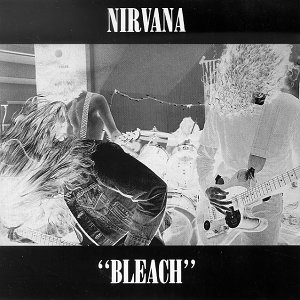
 In Red Sox lore, the facts state that 10,454 fans–a pathetic number–attended Ted Williams’ last game in 1960, when he grew his legend to Mount Rushmore proportions by slamming a home run in his last at-bat. The whole epic game was frozen in time by John Updike, who published an essay on the game–one of his most famous nonfiction pieces–in The New Yorker.
In Red Sox lore, the facts state that 10,454 fans–a pathetic number–attended Ted Williams’ last game in 1960, when he grew his legend to Mount Rushmore proportions by slamming a home run in his last at-bat. The whole epic game was frozen in time by John Updike, who published an essay on the game–one of his most famous nonfiction pieces–in The New Yorker.
Here’s the lore part: Nowadays, about 70,000 old-timers claim to have been at the game, or roughly twice as many as the since-expanded Fenway Pahk can seat, standing room included. Truth is, the Sox stunk at the time. Fans didn’t like Ted, and Ted didn’t like them, either. There were many more empty seats than not on that day. And that’s that. Don’t be a sentimental loser and take us on some nostalgia cruise.
Nirvana’s 1989 debut is similar in rock lore: It cost $606.16 to record at Recpirocal in Seattle and was produced by Jack Endino–who presided over many seminal Northwest grunge sessions and rode Nirvana’s popularity into his own rightfully earned fifteen minutes of “hottest producer in the world” fame. Since local guitarist Jason Everman liked the band, he fronted the dough for the studio time and was depicted on a poster included in the first 3,000 copies, the first thousand pressed on white vinyl ($1,500 on eBay 20 years later if you have the stones to bid on what looks like an original), the next 2,000 on black, and later pressings in red and blue. In total, it sold 30,000 copies before Nevermind.
After Nevermind, this record went platinum along with it. And, like the folks who “witnessed” The Splendid Splinter’s swan song but somehow misplaced their ticket stubs, a lot of Nirvana fans conveniently time-shifted their date of discovering the band back to the Bleach days. Don’t believe ’em for a second. I do know a few ex-hardcore Sub Pop Records addicts who would buy literally everything the label put out in 1989 (this is how Mojo discovered that Soundgarden sucked way before they were famous), but in 2009, only one of those dudes claims to have heard Bleach before Nevermind, and he cops to thinking it wasn’t very good at the time (and still is much less impressed with the record than its multi-platinum followup–and even given that, prefers listening to Mudhoney two decades later).
As for me, I discovered Bleach soon after Nevermind. Like a lot of rock fans, the first time I heard “Smells Like Teen Spirit” I rushed to the record store in a “ding dong the witch is dead” moment, jarred out of my Guns ‘N Roses/Milli Vanilli/Paula Abdul music fog. We had to have more of this music, and discovered it was this marvelous band’s second record! At once, millions of fans fully understood Nirvana was the future of rock music, and that Kurt Cobain would rescue us from the world of prefab garbage and make Indie Rock cool again. Didn’t quite work out that way, as indie rock sold its young and major labels would sign even crappy bands like Stone Temple Pilots if they merely farted somewhere near Seattle.
Bleach is a minor-league album. Cobain admits he wasn’t trying real hard when writing lyrics for the record, some of them allegedly scrawled during car rides to Reciprocal. Yet, some of Bleach’s songs are classics in the Nivana canon, like “Negative Creep.”
[kml_flashembed movie="http://www.youtube.com/v/4Xu-gp0XMmk" width="425" height="350" wmode="transparent" /]
The original “About a Girl” shows up on the record, an acoustic MTV Unplugged version of which became the first hit single for the band after Cobain killed himself in 1994. It’s worthy of the major leagues:
[kml_flashembed movie="http://www.youtube.com/v/JpMt_YqVbhw" width="425" height="350" wmode="transparent" /]
Those two are favorites of mine and still hold up to 20 years’ worth of listens. “Love Buzz,” however, reigns supreme with its seductive Persian-sounding bass figure that once heard, cannot easily be dumped from one’s cranial music cache:
[kml_flashembed movie="http://www.youtube.com/v/ZLthJDXbq6Y" width="425" height="350" wmode="transparent" /]
Some fans would argue–and although I go back and forth, I generally agree–that Endino’s cleaner, sharper production sounds better than Butch Vig’s overdriven-noise approach on Nevermind. In fact, part of the reason I can’t listen to Smashing Pumpkins or L7 might have more to do with Vig’s production. But I will say that Bleach is an interesting record, partly because it’s Nirvana in a grungier, raw developing state. And it’s a lot easier to see where they were headed when you can hear where they’d been when they truly were undiscovered kids putting out low-run vinyl records deep underground.
While it didn’t chart, Bleach might have been 1989’s most significant album, launching the career of Cobain and bandmate Dave Grohl (who isn’t on Bleach but joined soon after), whose Foo Fighters are still going strong and putting out decent records–and who can argue that Nirvana wouldn’t have become more collaborative in its second and third decade, and Grohl’s great Foo hits weren’t destined to be Nirvana classics?
We’ll never know, because a confused, drug-addicted, physically and mentally ill Cobain committed suicide after cutting just three Nirvana studio albums. The much more stable–and pop-minded–Grohl carried on, and while the Foo Fighters ain’t no Nirvana, they’re pretty good nonetheless. Bleach is Nirvana’s “before they were stars” moment before it went on to move 25 milion records in the U.S., 50 million worldwide. Naked, unpolished, yet groundbreaking nonetheless.




Comments